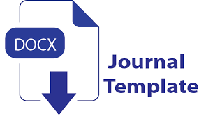Analisis Penentuan Kelayakan Judul Skripsi Mahasiswa dengan Metode Profile Matching dan TOPSIS
Abstract
The selection of a proper student thesis title really requires precise accuracy, because there are often similarities with existing thesis or discrepancies with the vision and mission of the study program. The supervising lecturer is the one who selects the feasibility of the student thesis title, where the number of students being mentored is sometimes more than 3 people. Therefore we need a method that can assist in making decisions to determine the feasibility of student thesis titles. The method used in this research is Profile Matching and Topsis. Profile Maching is a method that is often used in decision making where the stages in the method consist of determining criteria, determining the gap value, calculating the core factor value and secondary factor value, the sum of the core factor and secondary factor values and then the final conclusion or final selection. While Topsis is one of the methods in a decision support system where the steps in this method are to normalize the matrix and determine the ideal positive and negative matrix solutions so as to produce values from the largest to the smallest. The criteria used consist of title renewal (K1), suitability of the study program vision (K2), suitability of study program mission (K3), suitability of specialization courses (K4), and similarity of research with previous titles (K5). In this study, it was found that the TOPSIS method produces an accuracy value of 80% and is effectively better than the results of the Profile Matching method with an accuracy of 60% in making decisions about whether the student title is feasible or not.
Keywords: TOPSIS, Profile Matching, Eligibility of Thesis Title
Full Text:
PDFDOI: http://dx.doi.org/10.30829/algoritma.v5i1.9953
Refbacks
- There are currently no refbacks.
 Indexing:
Indexing:
 |  |  |  |
|
Algoritma: Jurnal Ilmu Komputer dan Informatika
This work is licensed under a Creative Commons Attribution-ShareAlike 4.0 International License.


